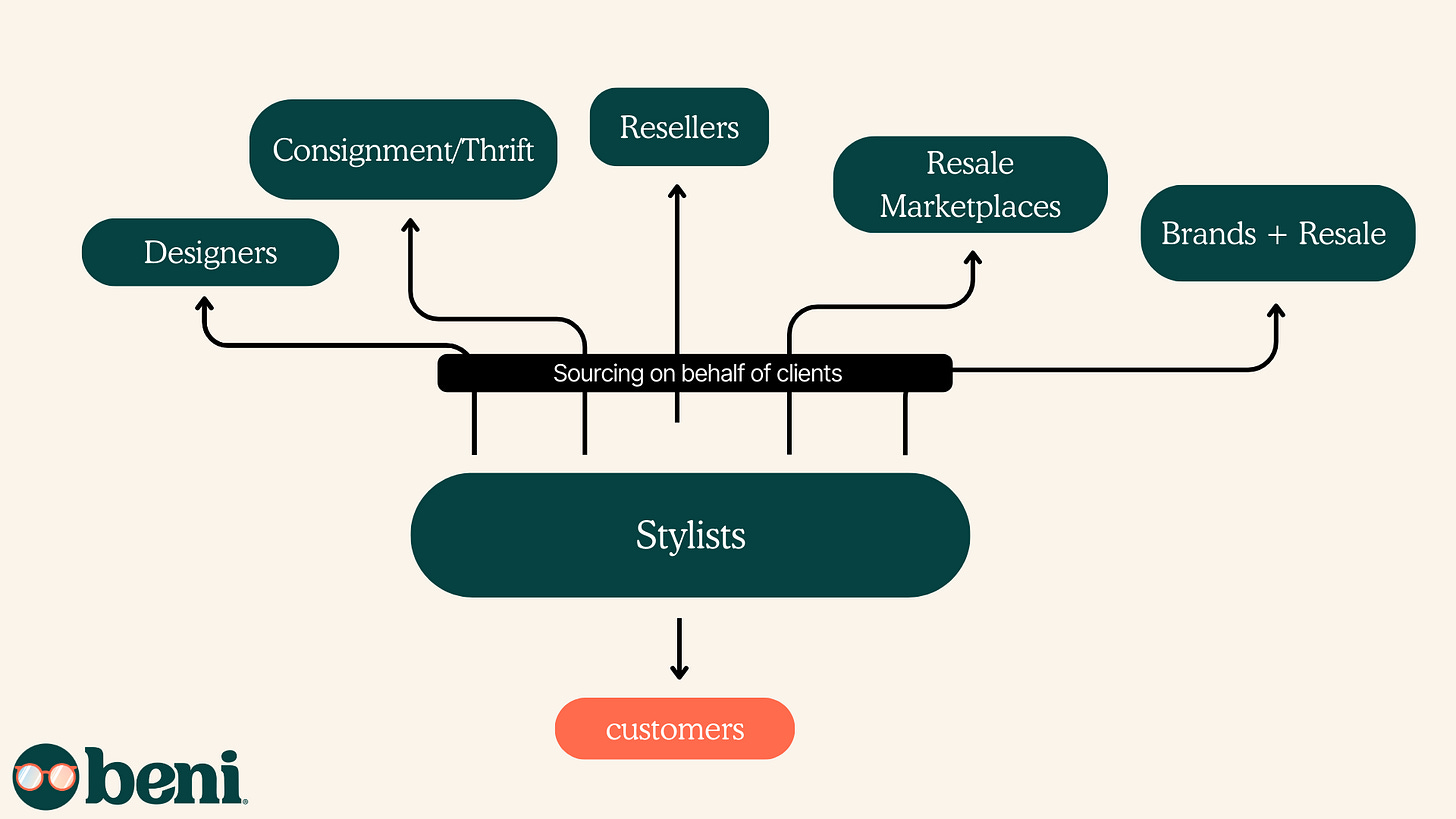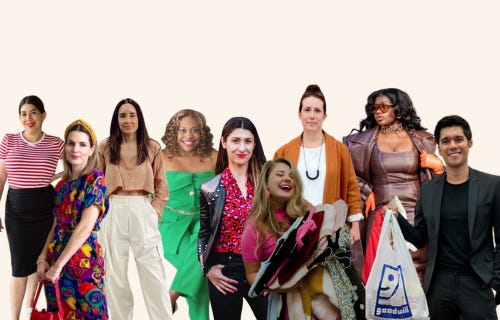Part 8: How stylists are helping you think smarter about your closet
Part 8 of our 10-part series breaking down each of the major stakeholders in the resale industry and how all the pieces come together.
Stylists operate in an exciting spot within the fashion industry. They serve as a bridge between their clients and various aspects of the fashion industry. Stylists get to use their expertise to craft looks that can have major influence on culture or major influence on the day-to-day life of their individual client.
The Business Model
Stylists as businesses are so varied. Some may serve the average person while some may be dressing celebrities or working within fashion houses or creative industries as consultants. No matter who the audience of the stylist is, you can think of stylists as connectors and behind-the-scenes influencers within the fashion industry.
First, let's consider celebrity styling. In this case, stylists are serving as tastemakers, responsible for sourcing and curating looks. They have a pulse on the industry at large and use their knowledge of trends, designers, and their clients to curate looks that are meant to be seen and worn by prominent people, at photoshoots, red carpets, or even a purposeful street style moment. Stylists are often intermediaries between celebrities and designers.
There's also personal styling geared more towards the average person. With this audience, stylists may actually take on several different roles, from a closet consultant to an educator to a personal shopper. Stylists may help clients learn how to make the most of their current closets, teaching them how to reimagine the ways in which their clothes can be worn. They also may come alongside a client in teaching them how and where they can shop that suits their needs.
The potential roles of stylists are vast and can get as specialized, personal, and creative as the stylist and their client are willing to.
Industry Role
Celebrity or fashion house stylists get to play the role of cultural influencer from behind the curtain. How a stylist chooses to dress a celebrity makes a statement and has a ripple effect on trends and what the customer sees as desirable or “in.” Stylists, therefore, carry a lot of power alongside their celebrity client in influencing trends. By choosing to dress a celebrity in lesser-known minority-owned brands or in vintage archive designs or in experimental looks, stylists are telling a story that reflects both the identity of the client and the role and future of fashion. They may put certain designers on the map or create demand for a certain brand or look just by curating a public style moment. Consider how Meghan Markle stepping out in a certain coat almost immediately resulted in that coat selling out.
When it comes to personal styling, stylists play an important role in educating their clients about fashion— how to get more use out of their clothes, how to think about clothes and fashion, and where they can look to find what they need. In this way, stylists have incredible influence in teaching sustainable practices to individuals. By teaching clients how to increase their clothes' functionality or how to identify their personal style, stylists help clients curb unnecessary shopping. They can also introduce clients to the world and potential of secondhand as a resource, especially for clients who are on a budget or interested in sustainable solutions. Some stylists specialize solely in secondhand styling.
Stylists can use secondhand resources as a source pool no matter who their clientele is. Celebrity or photoshoot stylists may pull from vintage shops and archives. Film and costume designers may tap into thrift and Depop fashion as inspiration for characters (think Portia from The White Lotus). Stylists may take their clients on a walk-through at the local thrift store to teach them how to make the most of it. Stylists play an important role in teaching their clients how to leverage secondhand sources and explore style beyond just what's available at traditional retailers.
Major Players
When it comes to influential stylists, you have to talk about Law Roach, aka @Luxurylaw. He is largely responsible for making Zendaya a fashion icon with other major clients like Ariana Grande, Céline Dion, and Anya Taylor-Joy. He refers to his role as being an “image architect” and lives up to it with his masterful, influential crafted looks.
Platforms bringing personal styling to the masses include Stitch Fix and celebrity stylist-owned Wishi. These sites allow you to connect with stylists online and receive catered-to-you looks.
In reality, many personal stylists operate on a smaller scale, whether that's regionally, online-only, or with a speciality, such as Mikado, The Secondhand Stylist or Sophie Strauss Styling.
The Opportunity of Styling
Stylists help individuals curate their looks which includes introducing them to new ways and places to shop. Stylists also have opportunities to do this for more creative or outward-facing platforms such as fashion shows or brand work. In this way, there's a lot of opportunity for partnership. Stylists can normalize and de-stigmatize secondhand by being able to present it in the best ways and show off its potential. They can connect secondhand businesses to clients and outlets that can expand the reach and appeal of secondhand.
In many ways, stylists can serve as a liaison between an individual and the fashion industry. Next week, we will explore the specifics of the role the shopper plays in fashion.
9 stylists that will help you shop sustainably this Secondhand September
Originally coined by Oxfam in 2019, Secondhand September is a movement that encourages fashion lovers to solely shop pre-loved apparel throughout the month in order to help decrease the industry’s carbon footprint — it’s also a great way to celebrate the wonderful and growing world of resale!






As the Founder of a marketplace which connects customers to Stylists - https://www.shopwithrove.com/ - this post was much appreciated!